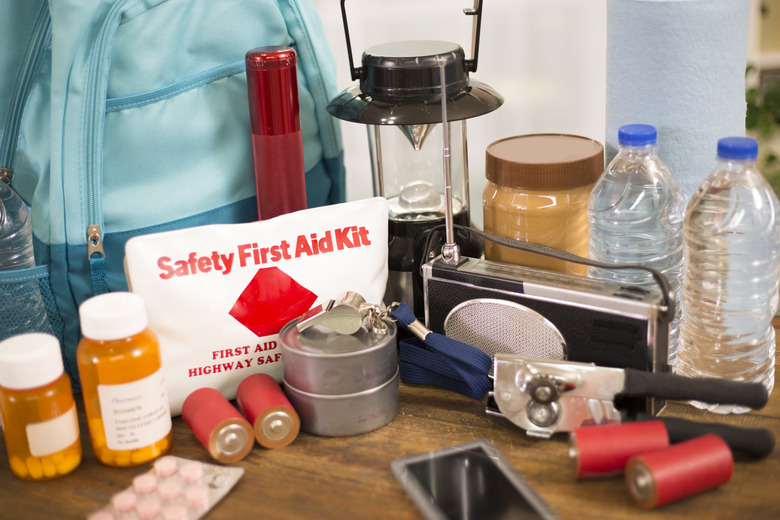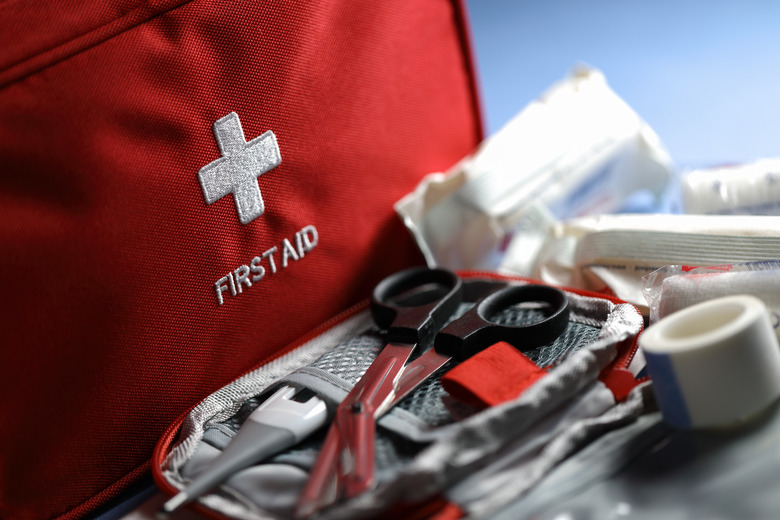The Ultimate Guide To Natural Disaster Resources
The best time to get help and information about natural disasters is before you need it. In this case, a good defense is indeed the best offense. There are, of course, many resources and disaster relief available to those who have endured a natural disaster, but there are also lots of resources that can help you plan for and stay safe during such an event. Hopefully, this is information that you'll never need, but it is still a good idea to have it.
Ready.gov
Ready.gov
The Ready Campaign is a national effort to provide comprehensive disaster recovery information and get the public actively involved in disaster planning and emergency preparedness. The Ready.gov website is perhaps the most comprehensive disaster preparedness guide you will find. The site explains what to do before, during and after a wide range of emergencies, including tsunamis, nuclear power plant issues and even space weather. Of course severe weather events like floods, earthquakes as well as wildfires are also covered.
Not only can Ready.gov tell you what you need to know but it also contains all kinds of disaster response that can help you and your family make a plan for your health and safety, put it in writing and practice it so that your family can be ready for anything. Once you have your family or business in order, Ready.gov offers a fact sheet that lists ways you can get involved and help your community at large be better prepared.
Centers for Disease Control and Prevention
Centers for Disease Control and Prevention
Most of us think about the Centers for Disease Control and Prevention (CDC) more in terms of illness, public health and pandemics than natural disasters. The CDC has a lot of good natural disaster and emergency response information, however. Like Ready.gov, the CDC offers comprehensive guidelines for a large number of emergency situations.
Perhaps the most helpful feature offered by the CDC is the Take Action page on its website. Here, you can learn how to prepare food and medications for an emergency. You can also learn how to properly prepare and use a generator in the event of a power outage. The CDC also offers a checklist of important papers and documents you should plan to keep safe in the event of an emergency.
U.S. Department of Agriculture
U.S. Department of Agriculture
The United States Department of Agriculture (USDA) takes a unique but helpful approach to prepare for natural disasters. Because its focus is primarily on food and farming, it offers excellent advice on keeping your pantry stocked and protected so you have adequate access to safe food and water during a disaster.
The USDA also provides some good information for traveling with your pets, which can be crucial if you need to evacuate. The site doesn't provide information about shelters that accept animals, which is unfortunate, but it does offer specific information about crossing state lines with your pet, which could prove to be relevant.
American Red Cross
American Red Cross
The American Red Cross provides excellent first-aid training and does sell first-aid and other emergency supplies. It doesn't offer a lot of disaster planning assistance and materials, but it shines during and after natural disasters.
The Red Cross website makes finding a shelter near you easy. During and after traumatic events like natural disasters, it provides food, water, shelter, child care and even laundry services. It will also help you find and connect with loved ones with whom you may have lost track in the chaos. Even the best disaster planning can come up short depending on the situation, but the Red Cross has your back and is an excellent resource when you need help.
The Federal Emergency Management Agency
The Federal Emergency Management Agency
In the event of natural disasters, the Federal Emergency Management Agency (FEMA) is probably not going to be your first call. Like many government agencies, FEMA responders can move slowly and clumsily in the wake of a disaster. It is still important to contact FEMA after an emergency, however, as it does provide a lot of good assistance.
It can easily take 20 days or longer to complete the entire FEMA application process, but once you do, you could find yourself eligible for temporary housing funds as well as home repair or replacement assistance. FEMA also provides funds to deal with replacing cars and personal items, covering funeral expenses and paying medical bills.
DisasterAssistance.gov
DisasterAssistance.gov
Managed by the United States Department of Homeland Security, DisasterAssistance.gov is a fantastic guide to help you find local resources. Simply plug in your ZIP code and the website will show you information about any natural disasters or problems currently occurring in your state. At the bottom of the page, the site will then list several links to disaster help and resources specific to your area.
This is a fantastic resource when you are dealing with an issue, but it is also helpful if you have loved ones dealing with an emergency out of state. If they lack internet access, you can easily look up local resources for them and help get them the information they need.
Autism Speaks
Autism Speaks
Autism Speaks is a nonprofit organization that helps to encourage research into autism while providing support for autistic community members. Unfortunately, the routine-changing chaos that natural disasters bring can be incredibly difficult for autistic individuals.
The Autism Speaks website helps families deal with these disruptions. The information includes how to find shelters that can accommodate special-needs individuals and what the rules are for service animals during an emergency.
Natural Disasters? There's an App for That
Natural Disasters? There's an App for That
Today, it seems that there is a mobile phone app for everything, and natural disasters are no exception. The American Red Cross has developed a series of disaster resource apps that will send you alerts and allow you to track conditions during an emergency. It has apps that cover all types of natural disasters, but you can pick and choose from them and download apps only for those disasters that are most likely to occur in your area.
There is also a first-aid app that can help guide you through emergency situations. The Red Cross shelter app is a helpful tool that lets you see where emergency shelters are being established and how full they are. This can save you from wasting time traveling to a shelter that is already full.
Although not technically an app, the Red Cross also offers a Safe and Well website during emergencies. There, you can register and mark yourself safe so you and your loved ones can quickly and easily check in on each other.
References
- DisasterAssistance.gov: Find Local Resources
- Autism Speaks: Autism Speaks Natural Disaster Resources
- Federal Emergency Management Agency: Individuals and Households Program
- Federal Emergency Management Agency: What to Expect After You Apply for FEMA Assistance
- American Red Cross: Get Help
- U.S. Department of Agriculture: Disaster Resource Center
- Centers for Disease Control and Prevention: Take Action
- Ready.gov: Home
- American Red Cross: Mobile Apps


